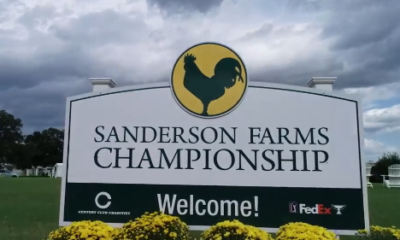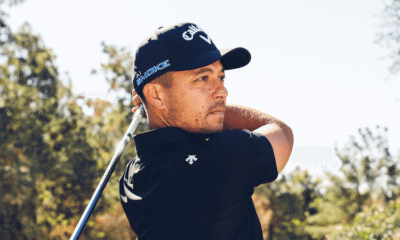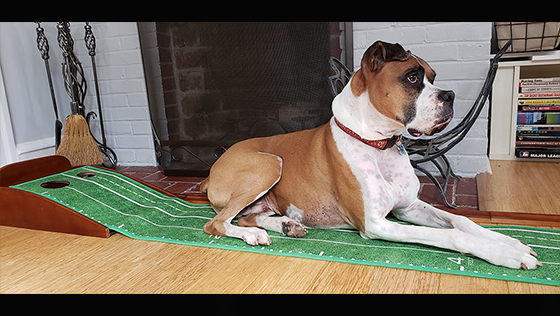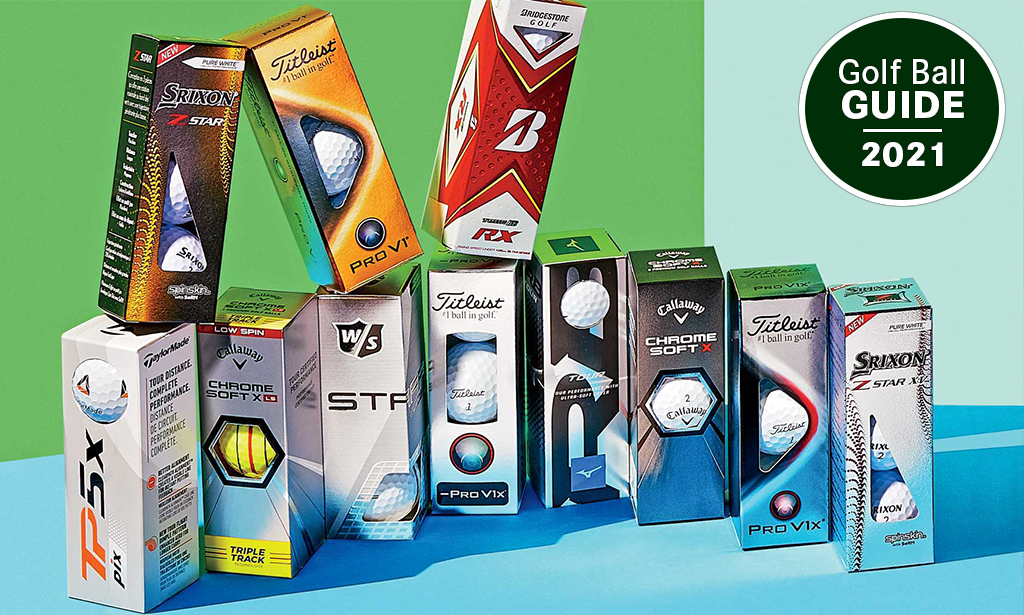Blog
Tiger Got His Incredible Edge From This Game Changer
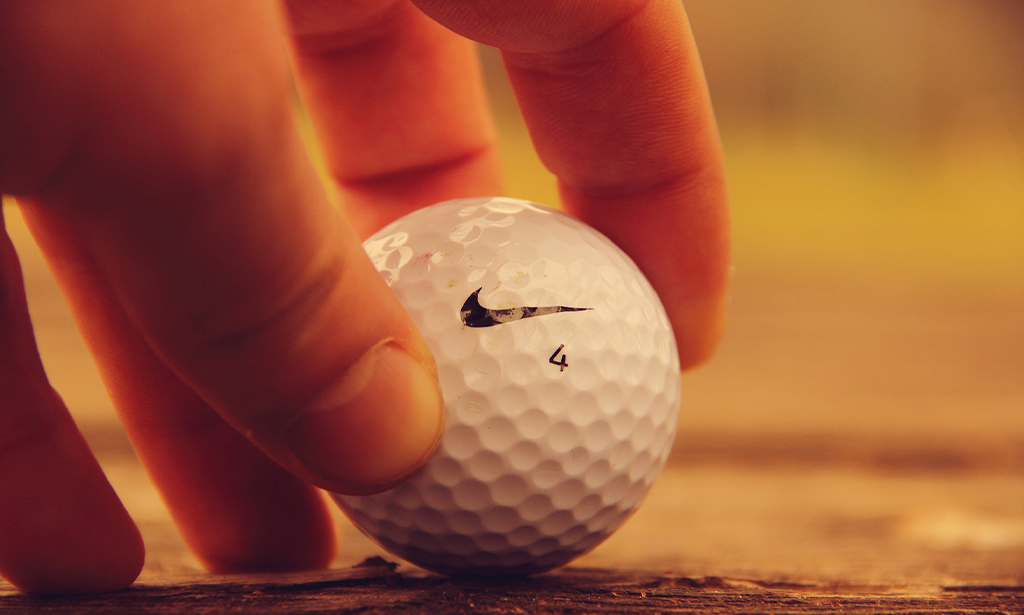
Tiger Woods’ 2000 season will go down as one of the greatest in the history of the sport. Three consecutive major wins. Nine worldwide victories. An astounding 17 top 10 finishes in 20 starts. A scoring average that was nearly three shots better than the Tour average. And the list goes on and on.
Woods was in a class by himself that year.
What’s even more impressive is that Woods completely rewrote the record books with a three-piece, solid construction ball with a molded rubber core injected and urethane cover that was markedly different from what his peers were playing at the time. Up until that point in his career, a liquid-filled core and wound construction was the preference for a majority of pros, Woods included.
Tiger didn’t need an equipment edge to dominate the competition, but his decision to put Nike’s Tour Accuracy in play that spring at the Deutsche Bank-SAP Open in Hamburg proved to be a turning point for not only the 15-time major winner, but the equipment industry as a whole. By the time Woods closed out the Tiger Slam at the 2001 Masters, all but four players in the field used a solid-construction ball.
Steve Williams, Woods’ former caddie, had a front row seat for the equipment change. During the latest episode of the Chasing Majors podcast — a show he co-hosts with golf journalist Evin Priest — Williams detailed the evolution of Woods’ golf ball change and the impact it had on the sport.
“This golf ball didn’t come by accident,” Williams said on Chasing Majors. “When Tiger signed with Nike, [the ball] was one of the projects. It didn’t happen overnight. It was a couple years of engineering that went into developing the ball and getting it exactly right. And it wasn’t going to be put into play until such time that it was exactly how he wanted it.”
Up until that point in his career, Woods appeared to be in total control of his game as Williams assumed the caddie job in 1999, but even the Aussie noticed some massive improvements as his boss started to put the Nike ball through its paces during early testing.
“Tiger had a couple hundred balls in his practice bag — obviously all the balls he wasn’t using at the moment — and he’d go through the same array of shots, but there was an ease for him to do exactly what he wanted to do [with the Tour Accuracy],” Williams said on the podcast. “When he was trying to hit that stinger shot, he’d really have to concentrate on hitting it low and all the mechanics that went with it. But this ball, because it was designed so well, for specifically what he wanted to do, he’d hit the shots he needed with more ease and more confidence. Heading into the 2000 season, this ball was going to be a big factor, I felt.”
Pressed by Priest to offer a shots-per-round advantage the solid-construction ball gave Woods in competition, Williams didn’t hesitate.
“Every time you have a golf ball reacting to the way you want to hit it, I think that just frees you up and gives you confidence,” he said. “You’d have to say it was worth one or two shots per round, for sure.”
One or two shots per round. Considering Woods was already head and shoulders above his peers, an extra one or two shots would’ve made keeping up with the then-24-year-old almost impossible. His results on the course back up the fact that Woods was, indeed, practically unbeatable on the course with the new ball in play.
Williams was quick to note Woods’ near-immediate success with the Nike ball was the polar opposite of what happened to Greg Norman — Williams caddied for Norman from 1982 to 1989 — during the 1980s when he switched to a high-spin Spalding ball.
“When Tiger went to that Nike ball, it absolutely suited him,” Williams said. “But way back in the 1980s, Greg Norman played Spalding and went to the Tour Distance ball — he was obviously paid a lot of money to play Spalding and this new golf ball — and that ball was so detrimental to his career. It was the worst thing he ever did. That ball would’ve cost him two shots a round.
“If he would’ve ended up playing a different ball at Augusta, he would’ve won the tournament. I have absolutely no qualms in saying that. The Tour Distance spun more than any other ball — and Greg liked that. But it spun too much. Back in those days, he didn’t have the advantage of having all of this technology like TrackMan to be able to tell you how far the ball was going. You just thought this ball spins good. That’s the exact opposite of what Tiger did here.”
Following Woods’ dominant 2000 season, Titleist released the Pro V1 during the second week of October and watched as forty-seven Tour players immediately put it in play, making it the largest pluralistic shift of equipment at one event in golf history. Thanks to Tiger, we all get to reap the benefits of a ball construction that’s superior to its predecessor.
This article originally appeared on Golf.com.
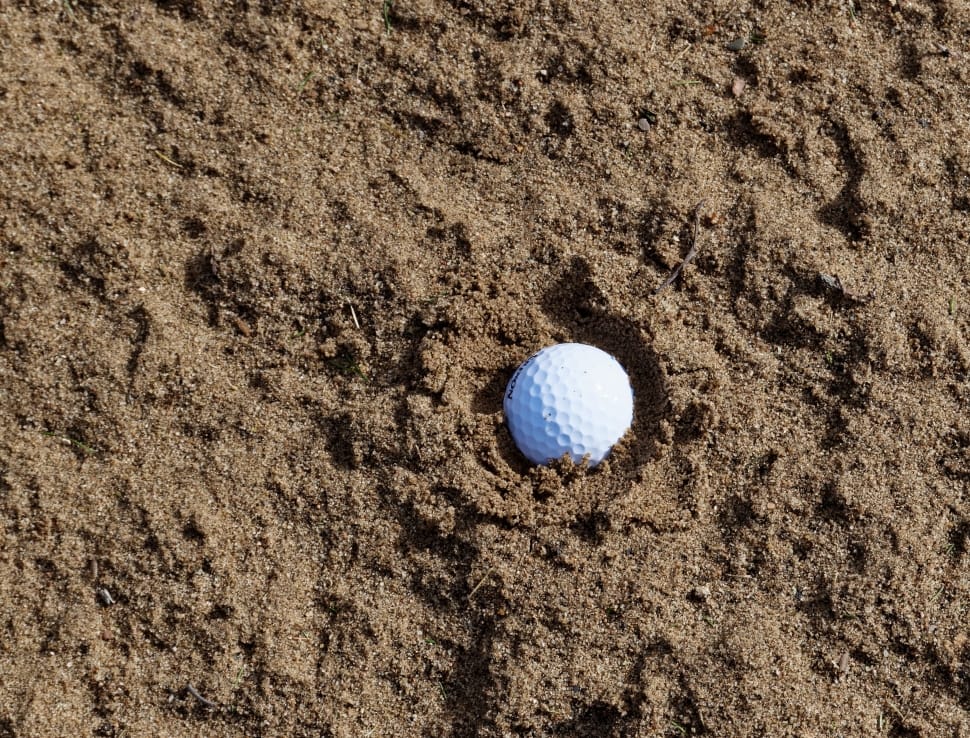
Hey there, golf warriors! Today, we’re venturing into the sandy side of the course—those bunkers, traps, and beach-like hazards that seem to pop up exactly where you don’t want them. Bunkers are like the quicksand of golf; one wrong step and your game could sink faster than a golf ball into a water hazard. But don’t worry—I’ve got your back. Let’s dive into the art of bunker escapes with a touch of humor and, hopefully, without too much sand in our shoes.
- The Sand Trap Strategy: Aim for Survival
First things first: getting stuck in a bunker isn’t the end of the world (though it might feel like it if you’ve found yourself in one of those “death traps” where the lip is higher than your dreams of breaking 90). The key? Survival. Don’t overthink it. Your goal is simple—get out and live to putt another day. Sure, you’d like to land softly on the green, but let’s be honest—getting anywhere onto solid grass feels like a win. - The “Flop It and Flee” Approach
Ah, the flop shot. When executed correctly, it’s one of the most beautiful shots in golf, and when it goes wrong, it’s like flinging a shovelful of sand in your face. The trick to a good flop out of a bunker? Open the clubface wide, aim slightly behind the ball, and swing like you’re trying to toss a pancake onto the green (without the sticky mess). The real key is your confidence—flop it and flee before anyone realizes you were as nervous as a cat in a dog park. - The 3 Types of Bunker Players: Which One Are You?
There are three types of golfers when it comes to bunkers:- The “Pretender” – This golfer steps into the bunker and instantly regrets every life choice that led them here. Their bunker shot might go sideways (literally), but they’ll put on a brave face and laugh it off. Bonus points if they brush off the sand with a half-smile, pretending it’s no big deal.
- The “Digger” – Armed with a sand wedge and a mission, they dig into the bunker with full commitment. Every swing gets them closer to the surface… but mostly it’s just a lot of sand. By the time they’re out, they’ve practically built their own bunker.
- The “Pro” – This rare breed strides into the bunker like it’s their personal beach. They barely disturb the sand, and the ball floats gracefully out, landing inches from the pin. These people exist to make the rest of us look like amateurs, but we all secretly want to be them.
- The Secret? It’s All in the Follow-Through
Here’s the big secret that’ll change your bunker game: the follow-through is everything. You need to swing through the sand like you’re cutting through butter with a hot knife. Don’t stop after contact—keep going, and let that momentum carry you (and the ball) to freedom. Think of it as the golf equivalent of running through the finish line, not to it. - Own the Sand Dance
Lastly, let’s not forget that bunkers aren’t just about survival. No, my friends, they’re about style. The moment you step into that sandy pit, you’re not just a golfer—you’re an artist about to perform a masterpiece. Own the bunker like it’s your stage. And when you finally hit that ball onto the green, do the post-swing sand dance—you know, that little twist as you casually sweep the sand with your foot, pretending that was all part of the plan. - Keep Calm and Rake On
When all is said and done, remember: bunkers are temporary, but raking is forever. After your escape (or at least after you’ve dug yourself out), it’s time to channel your inner zen gardener and rake the bunker smooth for the next poor soul. It’s golf karma—leave it better than you found it. And don’t forget to smile while you rake—it’s part of the healing process.
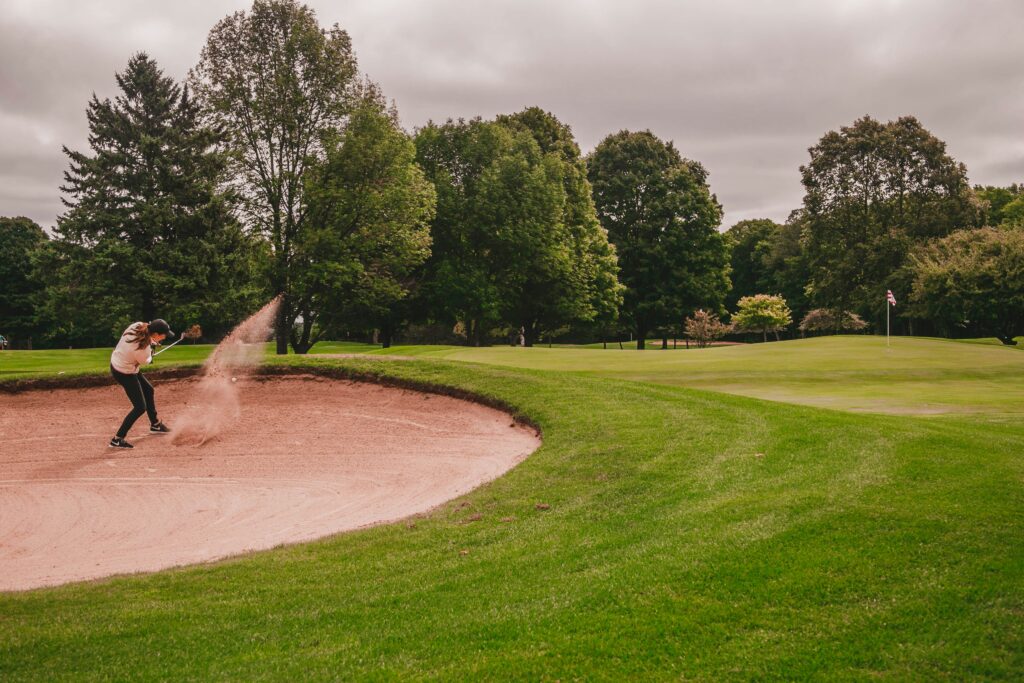
So there you have it, fellow golf gladiators—the battle of the bunkers, waged and (hopefully) won. Next time you find yourself knee-deep in sand, remember these tips: survive with style, embrace the flop, own the follow-through, and most importantly, laugh it off. You’ll get out, eventually, and when you do, you’ll be a little wiser—and possibly a little sandier. Until next time, may your swings be clean, your sand traps be shallow, and your escapes be legendary. Swing on, my friends!
Blog
The NFL 1 PM Parlay Adventure with a Golf Twist!
Kelly’s 7-leg parlay this Sunday combines NFL action and a bold golf pick, offering a thrilling chance to turn $10 into $1,778 while cheering for touchdowns and birdies!

Hey there, fellow sports fanatics! 🏈⛳ It’s Kelly, back again to make your Sunday even more thrilling! Today, I’ve got something special for you—a 7-leg parlay featuring not just NFL action, but also a golf pick to keep things extra exciting. If you love football and want a little extra reason to cheer, while adding some golf flavor, this parlay might be the perfect way to spice up your Sunday! Let’s dive in!
- Bengals Money Line (-250): Joe Burrow and the Bengals are taking on the Cleveland Browns, and I’ve got confidence in Cincinnati to come out on top. With their offense clicking, it’s hard to bet against them!
- Vikings Money Line (-120): The Vikings are at home against the Detroit Lions, and I’m putting my money on Kirk Cousins to do what he does best—win at home. Detroit is scrappy, but the Vikings have that extra edge in front of their fans.
- Colts Money Line (-165): The Colts are hosting the Miami Dolphins, and I think Indy is going to pull this one off. Miami’s been unpredictable, but the Colts’ defense should be enough to seal the deal.
- Eagles Money Line (-165): The Eagles are going up against the Giants, and let’s be honest—the Eagles are just a better team right now. Whether it’s Jalen Hurts scrambling for yards or the defense stepping up, Philly looks good for a win.
- Bills Money Line (-500): The Buffalo Bills are taking on the Tennessee Titans, and this one seems like a no-brainer. The Bills are strong favorites for a reason—they’ve been crushing it lately, and I expect them to keep up the momentum.
- Seahawks Money Line (+130): Now for the fun underdog pick—Seattle over the Atlanta Falcons! Geno Smith has been looking solid, and I think the Seahawks have what it takes to upset Atlanta. Plus, at +130, this one adds some nice value to our parlay.
- Doug Ghim Tournament Winner (+850): Adding some golf into the mix, we’re betting on Doug Ghim to take the win at the Shriners Children’s Open. Ghim has been in solid form, and a win here would make this parlay all the more rewarding. It’s a bold pick, but that’s what makes it fun!

The Odds and the Thrill:
This 7-leg parlay comes in at +17681 odds, which means a $10 bet pays out $1,778.17! Now that’s some serious potential for a Sunday funday! 💸🔥 Imagine sitting back, watching the games unfold, and also keeping an eye on the golf leaderboard—it doesn’t get much more exciting than that!
Why Bet This Parlay?
Adding golf to the NFL mix makes for an extra thrilling ride. Betting parlays like this is about making every moment count, from touchdowns to birdies. It’s not about breaking the bank—it’s about feeling the rush of having skin in the game. Even the smallest plays can make your heart race. With a potential payout of $1,778, why not take a shot?
Let’s Ride Together!
I’m calling this one “The NFL and Golf Parlay Adventure.” It’s a perfect blend of favorites, a strong underdog, and a golf pick to keep it spicy. Who’s in with me? Let’s place that small bet, cheer for every score, and see if we can turn $10 into $1,778 by the time the day is over! 🤑🏆
Drop your thoughts below, share your picks, and let’s enjoy this Sunday with a bit of added thrill. Remember, it’s all about having fun—bet responsibly and enjoy the ride! 🚀💚
#KellysPicks #NFLSunday #GolfBetting #ParlayTime #BettingFun #LetsWinTogether

Hello, golf enthusiasts and tech aficionados,
In today’s installment of “Tales from the Greens: Chronicles of Golf Through the Ages,” we dive into the exciting world of emerging golf technologies. From smart golf clubs that offer real-time swing analytics to next-generation simulators that bring the world’s top courses to your living room, the future of golf is here. Let’s explore these innovations that are transforming how we play and enjoy golf.
Smart Golf Clubs: Enhancing Performance with Data
The latest development in golf equipment is the smart club. These clubs are equipped with sensors and other technologies that provide feedback on every swing. Here’s how they’re changing the game:
- Swing Analysis: Sensors track speed, angle, and precision, offering suggestions for improvement.
- Real-Time Feedback: Connect your club to a smartphone app to get immediate insights during practice rounds, enabling on-the-spot adjustments.
Next-Gen Golf Simulators: A Gateway to Virtual Courses
Golf simulators have evolved significantly, with the latest models offering an immersive experience that rivals playing on a real course. Benefits include:

- Virtual Play on Famous Courses: Play world-famous courses from your home, experiencing different terrains and conditions without travel. Check out places like Top Golf and Five Iron Golf.
- Improved Accuracy: High-definition cameras and sensors capture your swing and ball trajectory with incredible precision, providing a realistic golfing experience.
AI and Machine Learning: Customized Coaching
Artificial intelligence (AI) in golf isn’t just a concept; it’s becoming a practical coaching tool. AI analyzes your performance over time to offer customized coaching tips, making it a personal trainer at your fingertips.
Social Integration: Connect and Compete
Modern golf technologies allow players to connect with friends and competitors online. Share your performance data, challenge others to virtual rounds, and even enter online tournaments.
These technological advancements are making golf more accessible and enjoyable for players at all levels. Whether you’re a seasoned pro looking to fine-tune your game or a newcomer seeking a friendly introduction to the sport, there’s never been a better time to be a golfer.
Stay tuned as we continue to explore how innovation is driving the future of golf.
Warm regards, Robert Greenfield
-

 Product Review5 years ago
Product Review5 years agoThe Perfect Practice Putting Mat Review by Jason Tenzer
-

 Blog3 years ago
Blog3 years agoLoophole Rule Offers PGA Tour Pros a Mulligan
-

 Blog3 years ago
Blog3 years ago2021 Buyer’s Guide: The Top 10 Value Golf Balls For Distance & Feel
-

 Blog3 years ago
Blog3 years agoGolf Marriage Counselor
-

 Blog5 years ago
Blog5 years ago9 Biggest Chokes Of The Past Decade
-

 Product Review5 years ago
Product Review5 years agoTHE ADJUSTABLE IRONS: WALKING STICKS GOLF CLUBS
-

 Blog3 years ago
Blog3 years agoWhat Your Golf Clubs Say About You
-

 Equipment5 years ago
Equipment5 years agoOHK Sports Interview by Jason Tenzer







